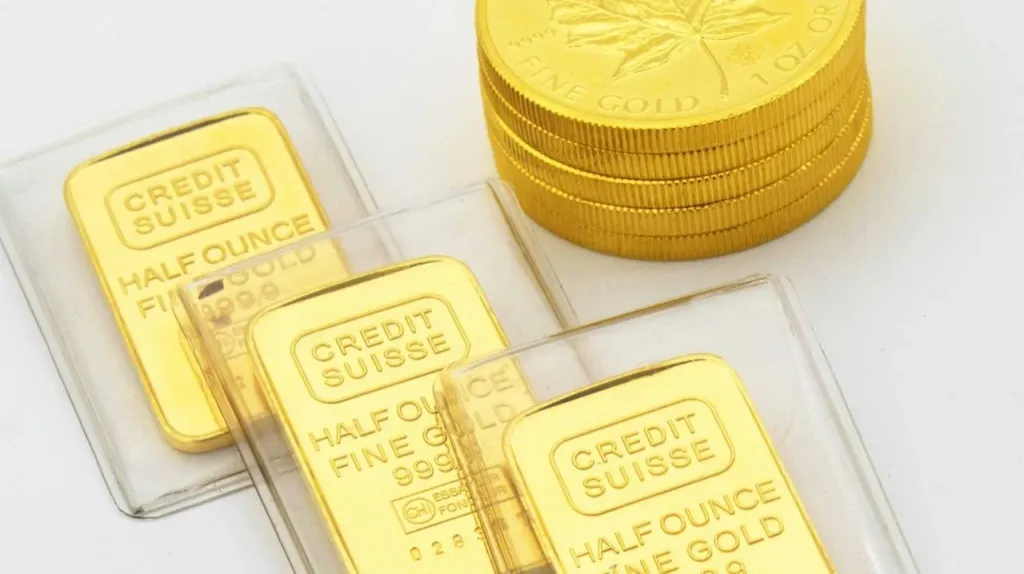Gold has overtaken the euro in terms of share in central banks' reserves. Will it continue to rise in price?
Since the beginning of the year, the spot price of gold has risen by more than 25%

Gold has become the second most popular reserve asset in the world, the European Central Bank reported for 2024. The share of gold in the reserves of the world's central banks is now higher than that of the euro. The last time that happened was more than 40 years ago. Central banks' interest in the protective asset has surged since the outbreak of a full-scale war in Ukraine in 2022. Some analysts believe that central banks will reduce the pace of gold purchases, while some advise to keep a sufficient amount of precious metal in their portfolios and prophesize its growth by another 14% against the background of persistent geopolitical risks;
Details
Gold has overtaken the euro to become the second-largest asset in the international reserves of the world's central banks in 2024, according to a report by the European Central Bank. Given the sharp rise in prices, by volume in monetary terms, gold's share of central bank reserves rose to 19% last year, while the euro's share fell to 16%. That was last seen in the 1960s, notes CNBC. The U.S. dollar remains the largest reserve asset with a 47% share.
Gold is traditionally considered a safe haven asset that remains stable in the face of market volatility, CNBC notes. Central banks buy it together with foreign currencies to protect against inflation and diversify reserves. In case of crises, they can sell these assets to support their own currencies. Central banks now account for more than 20% of global demand for gold - that's twice as much as in the 2010s. In addition, gold is becoming an increasingly attractive asset for developing countries against the backdrop of sanctions and a possible reduction in the role of leading currencies in the international monetary system, emphasizes CNBC, citing ECB surveys.
Demand for gold surged after the start of Russia's full-scale invasion of Ukraine in February 2022, CNBC writes. Amid a surge in inflation and expectations of rising interest rates, investors began fleeing en masse into protective assets. Since then, geopolitical and economic uncertainty has remained at a high level, provoking a further rally in the value of gold. Against the backdrop of macroeconomic instability in recent months, the price of gold has repeatedly updated its all-time highs, reaching $3500 per ounce. On June 11, the spot price of the precious metal jumped by more than 1%, and since the beginning of 2025 it has risen in price by more than 25%.
What's next
Many factors supporting the price of gold remain relevant, says UBS Investment Director Mark Hefele. He predicts that the price of the precious metal may rise to $3800 per ounce, i.e. by another 14%. He also advises investors to take care of diversification, hedge against risks and keep a sufficient share of gold in their portfolio, notes CNBC.
Nevertheless, in the coming months, central banks, which played a key role in the gold rally, may reduce the pace of gold purchases, says Hamad Hussein, economist for climate and commodity markets at Capital Economics. In the first quarter of 2024, the rate of gold purchases by central banks has already decreased by 33% compared to the quarter preceding it, notes CNBC, citing data from the World Gold Council. China's purchases have slowed down especially noticeably.
ING strategist Eva Mantei believes that despite the slowdown, central banks will still continue to add to gold reserves amid ongoing economic uncertainty and the desire to reduce dependence on the U.S. dollar. According to her, total gold purchases have increased by about 30 tons over the past six months.
The impact of geopolitics and demand on the gold price will depend on "supply flexibility," according to an ECB report. "Over the past decades, gold supply has responded flexibly to rising demand - including by increasing inventories in above-ground storage," the report said. - Consequently, if history teaches us anything, it is that a further increase in official demand for gold could stimulate an increase in its global supply."
